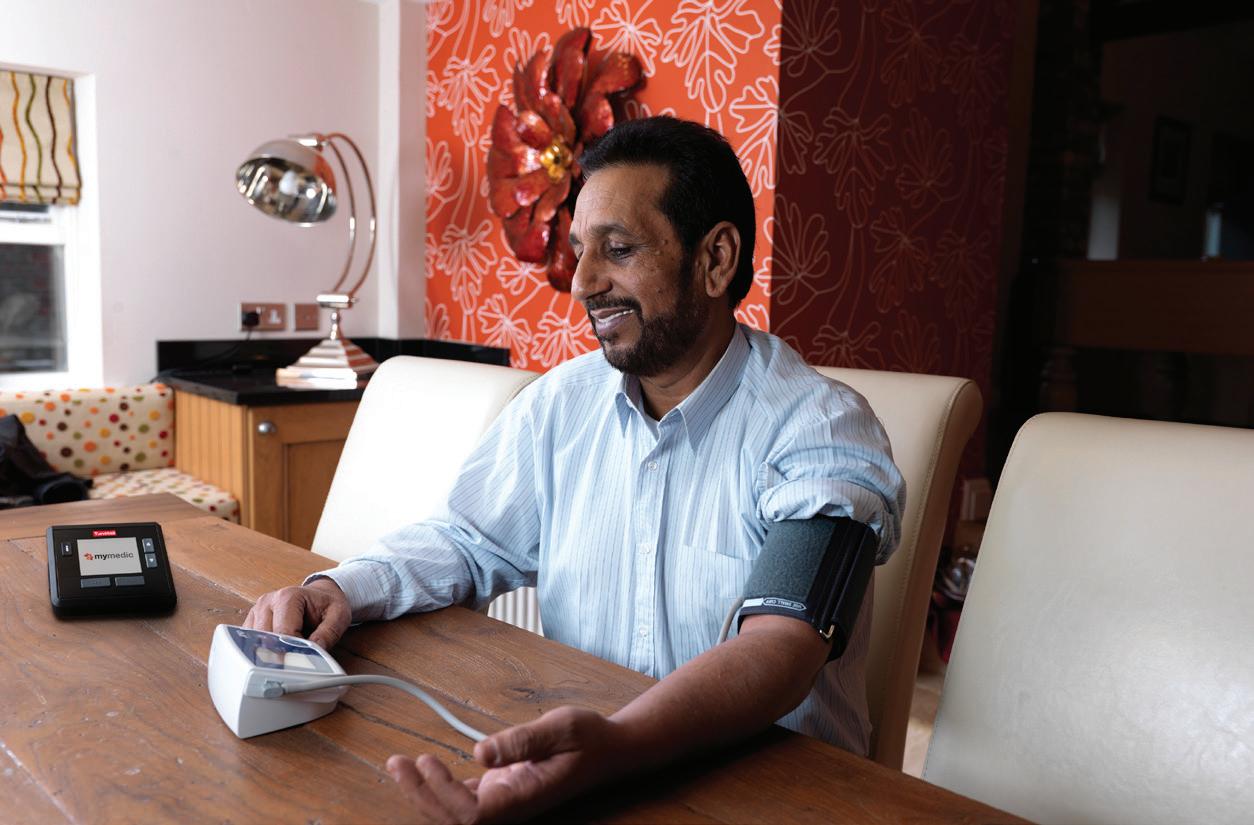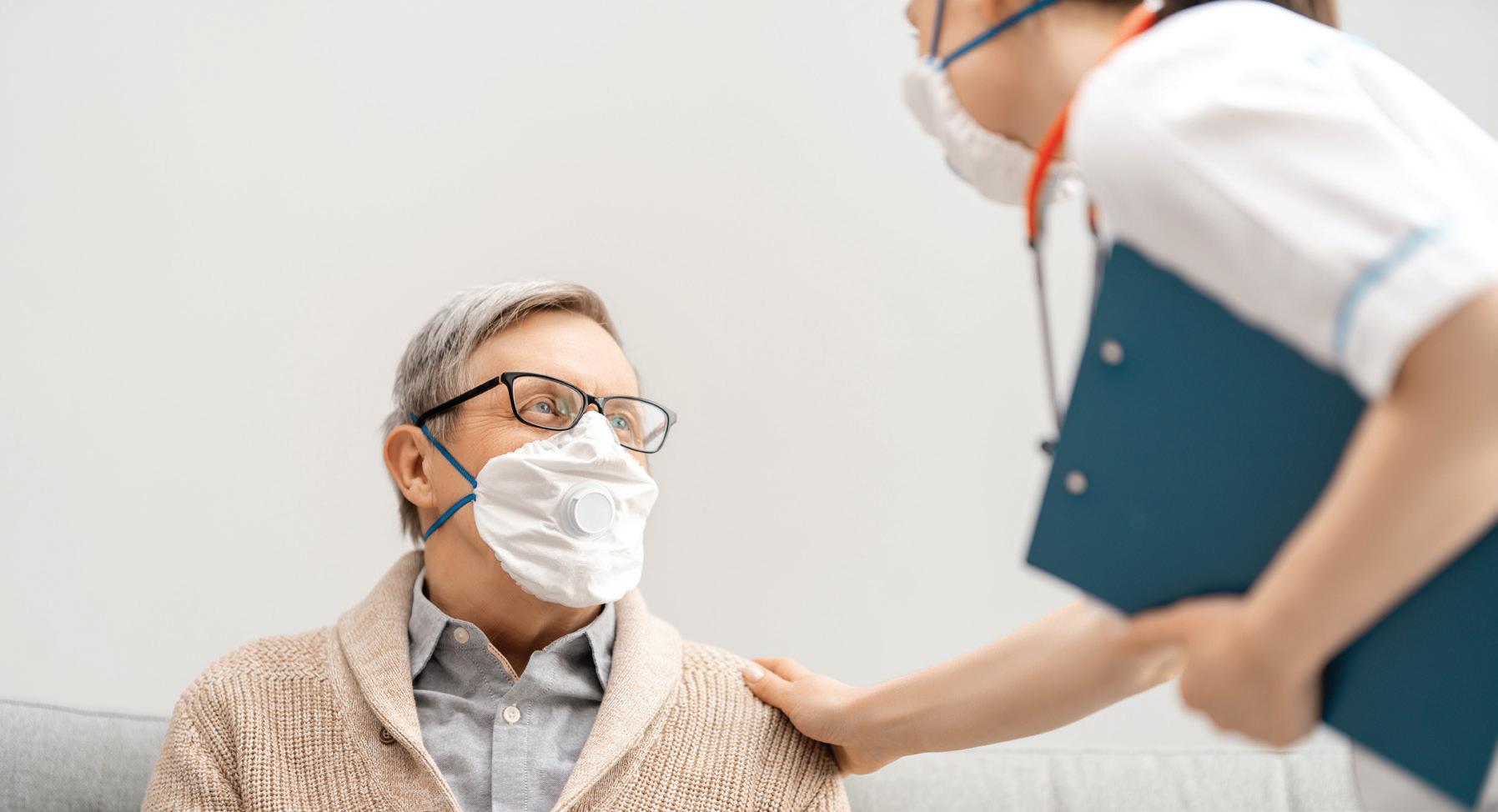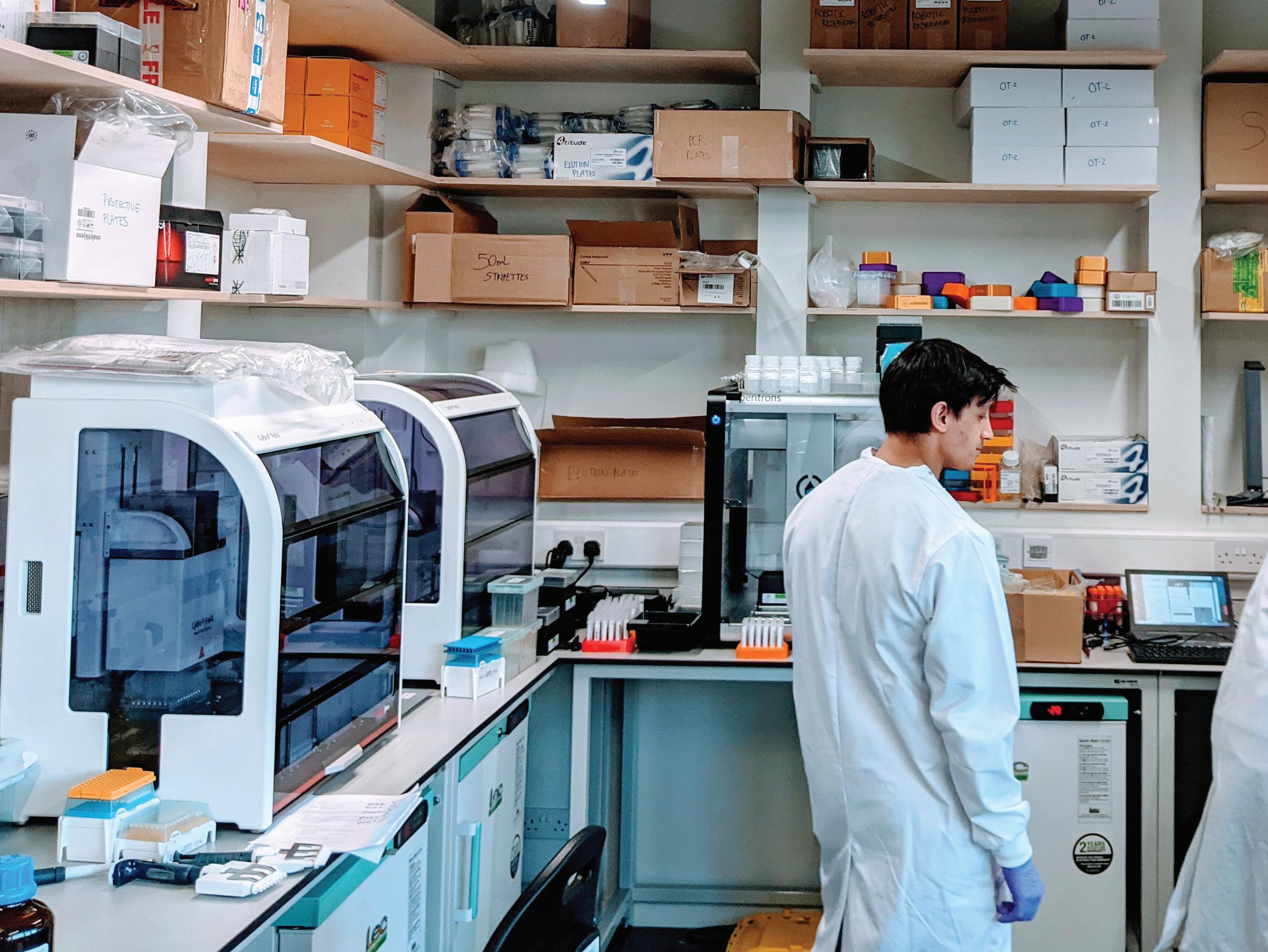
6 minute read
Tech enabled care
Zillah Moore, director at Tunstall Healthcare, discusses why local government and the NHS should invest in medical technology to improve services, and safeguard them for the future
Technology is reshaping our lives, however better deployment of technology within health and care services is a key challenge faced by the UK, and this has been particularly highlighted during the Covid-19 pandemic.
Technology connects people, enables integrated care provision and empowers people to manage their own health and wellbeing. It must play a pivotal role in investment and the remodelling of services in a post-Covid world to create a true ‘healthcare’ system.
Barriers to investment Many healthcare innovations are now mainstream, with millions of people using technology to count steps, calories, or hours of sleep. Yet we often don’t consider these innovations as health technology even though they provide remote monitoring, teleconsultation, and environmental sensors.
Although more people than ever are personally investing in medical technology, local authorities and the NHS face numerous barriers to investing in Technology Enabled Care Services (TECS), which has led to some services lagging behind when it comes to digital innovation.
Barriers are complex and intertwined, including fragmented health and care structures, limited resources, and a reluctance to change. The NHS and local authorities also face challenges with replication. Successful projects are rarely reproduced elsewhere in the system leading to different levels of investment and integration between councils and NHS trusts.
The impact of Covid-19 While the pandemic has had significant negative impacts on daily life and many elements of the healthcare sector, it has also placed a spotlight on the role of technology in supporting the development of more proactive and effective care delivery, and safeguarding our services for the future.
NHS trusts, clinical commissioning groups and local councils, are recognising that technology can offer remarkable benefits through wider and more effective investment and deployment.
Technological initiatives that would previously have taken months to become operational have been established and mobilised in weeks. Solutions implemented during Covid-19 have benefitted a range of cohorts, including people living with mental health conditions, care home residents, and people living with long-term health conditions.
Bolton NHS Foundation Trust and Bolton Clinical Commissioning Group invested in healthcare technology in April for 34 of the area’s care homes to protect residents, staff and clinicians during the Covid crisis. The trust and the CCG implemented a number of innovative services, including the ‘triagemanager’ and ‘myKiosk’ systems to deliver closer monitoring of the health of vulnerable residents, while reducing the need for clinical staff attendance and the risk of cross infection. The systems also support the effective prioritisation of care within a residential setting, as they clearly identify individuals most in need of interventions. The health technology provides objective information to empower clinical decision-making, often
Zillah Moore, director, without the need for face-to-
Tunstall Healthcare face contact. The success

of the partnership will be measured over time with metrics such as reduced ambulance and GP call outs being assessed, alongside resident outcomes, and the impact on caseload management.
The remote monitoring approach has supported the trust and CCG during the pandemic, but will enable the provision of more proactive care over the longer term, as well as a reduction in the pressures on primary and secondary care services.
Why should we invest? More effective deployment of technology can deliver significant benefits to our health and care services, from improving patient outcomes and service user experiences, to reducing the strain on staff, and delivering cost savings or avoidance.
TECS have a crucial role to play in improving the experience of individuals who require health and care services, their families, carers and professionals. Vulnerable people can use technology to live at home safely and independently for longer, and devices such as pressure sensors, fall, smoke, and flood detectors provide reassurance to the people using them and those that care for them.
By allowing patients to take vital signs readings remotely, telehealth services reduce the number of visits patients have to make to clinics, reducing travel time and costs, and encouraging services users to engage with their medical condition.
Patients who are engaged in their health and care, which is encouraged by technology, experience better outcomes as they are actively monitoring their health and wellbeing on a regular basis, and feel confident to make decisions based upon this.
TECS also provide benefits for staff and carers within health and care services. Not only do digital solutions reduce workload and benefit users, but they provide a greater sense of job satisfaction, reduced the burden of travel, and offer a greater sense of reassurance that they’ll be alerted in the case of an incident.
Cost savings and avoidance The TEC Services Association conducted an evaluation across 39 councils which identified average annual savings of £1,163 gross/£890 net per TECs user. This was typically split 70% cost avoidance and 30% cashable savings. Clearly, there are significant cost benefits to investing in such technology, both in the short and longer term.
Cost savings in practice In 2013 NHS Calderdale CCG introduced the Quest for Quality in Care Homes Programme to establish a more consistent and sustainable model of care for older and vulnerable individuals in Calderdale.
The programme took a person-centred approach to meeting the needs of people with long-term health and care needs, and to make efficient use of NHS resources. A key focus was to reduce avoidable hospital admissions from care homes, and demands on primary and secondary care.
The programme combines a multidisciplinary team with telecare and telemonitoring systems. The telecare systems consist of a range of sensors which automatically detect incidents such as a fall, or epileptic seizure, and alert staff to these events via a pager.
More than 1,300 residents have been supported in 38 homes over the past six years, and the project has achieved significant financial efficiencies and associated cost savings since it was introduced.
Results for the second year of the Quest for Quality in care homes pilot (2015-16) showed the cost of hospital stays had reduced, saving more than £700,000 year-on-year, and emergency admissions were down 26% year-on-year.

The next stage of TECS Projects such as the investment into TECS initiated by Bolton NHS Foundation Trust and CCG, NHS Calderdale CCG, and the Covid-19 pandemic, provide clear evidence that TECS result in better patient experiences, improved health outcomes, improved staff experiences, and reduced costs for individuals, the NHS, and local authorities.
Yet, investment in TECS within the healthcare sector is still in its infancy. The NHS, including its trusts, CCGs, and local authorities must work together to develop innovative models which support more efficient care delivery and longterm efficiencies. It’s crucial that we see greater collaboration, improved understanding of the benefits of TECS, and more budget to enable further engagement among vulnerable people.
We’re also beginning to see the next generation of predictive care technology, and over the next few years it’ll encompass integration that enables diverse and scalable models of health and social care. Using artificial intelligence and taking datadriven insight from multiple sources, providers will use this next generation of solutions to optimise population health management programmes by providing personalised and anticipatory care.
Although there’s still a long way to go, this is a trend which will continue and greater investment will lead to technology and data featuring more prominently in how our services are designed. This will empower people to manage their own health, reduce the strain on our services, and safeguard them for the future. n










